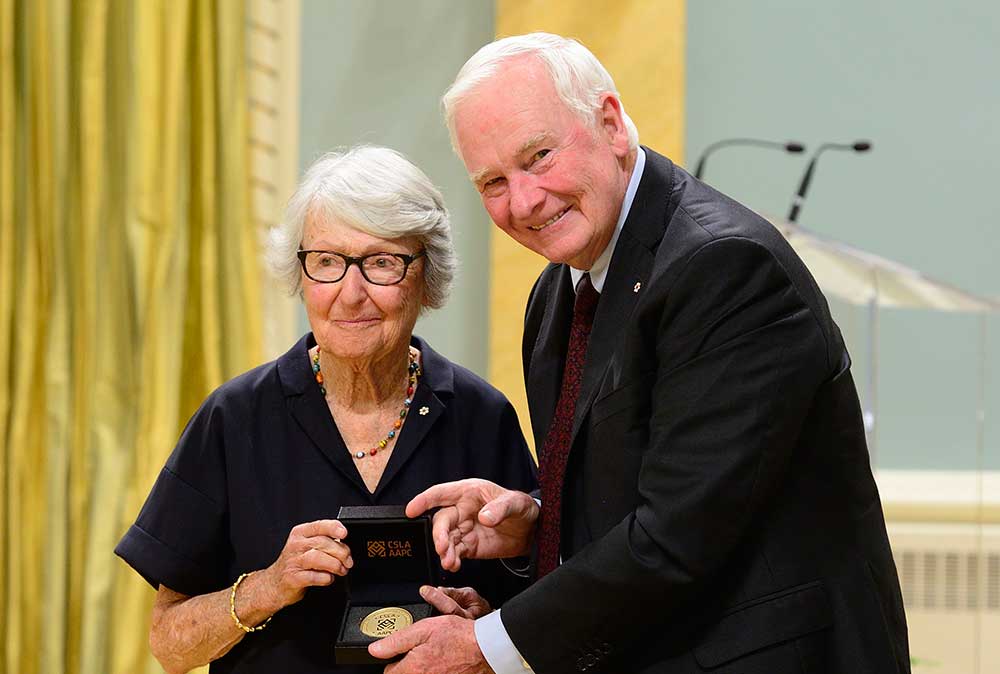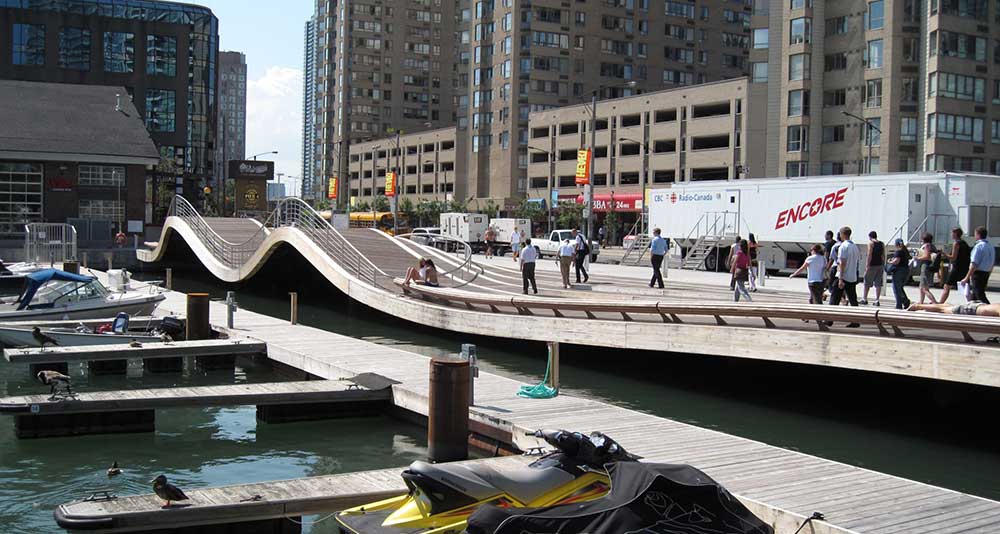Defining the Places We Live, Work, and Play
By Anna Guy
 In April of 2016, Cornelia Hahn Oberlander became the recipient of the inaugural Governor General’s Medal in Landscape Architecture, an award that raises the profile of Landscape Architecture in this country to new heights.
In April of 2016, Cornelia Hahn Oberlander became the recipient of the inaugural Governor General’s Medal in Landscape Architecture, an award that raises the profile of Landscape Architecture in this country to new heights.
If you’ve ever felt welcomed to the National Art Gallery of Canada’s by its surrounding garden, inspired by the museum’s collection of the Canadian Group of Seven paintings and on the Taiga landscape of Northern Canada National Gallery of Canada, then you’ve felt Oberlander’s influence.
Perhaps you’ve enjoyed Robson Square in Vancouver, or, on the other end of the spectrum, the New York Times Building atrium, an astounding the courtyard is experienced by 360-degrees of uninterrupted views from a variety of surrounding public spaces and office spaces above northern Birch trees and planted mounds, then you’ve felt her influence on not only the physical environment, but on the field of landscape architecture.
Landscape Architecture can be widely defined as the design, planning and management of urban, rural and natural environments. Canadian landscape architects, like Oberlander, are particularly well-regarded for their vision, creativity, sensitivity and practicality in all aspects of professional practice, creating unique functional outdoor spaces for our citizens, as well as protecting and enhancing the environment.
The CSLA
“The work of a landscape architect is extremely varied,” says Michelle Legault, Executive Director of the Canadian Society of Landscape Architects (CSLA). “It touches the design, planning, management and stewardship of outdoor areas both public and private, landmarks and structures, any type of land which needs to be managed in some way.”
The CSLA is the voice of landscape architects in Canada, representing the approximately 2,000 landscape architects in the country on issues such as urban design and renewal, sustainable development, climate change and cultural heritage. The CSLA’s provincial component associations, regulate the profession of landscape architecture through licensing or certification of its members.
There are currently six accredited university programs for Landscape Architecture, and as of next year, in addition to the current landscape architect members, the CSLA will open its membership to include interns and students.

Cornelia Hahn Oberlander receiving the inaugural Governor General’s Medal in Landscape Architecture in 2016
History of the Profession
Vincent Asselin is a partner at WAA international Ltd (multi-disciplinary firm specializing in the fields of landscape architecture, urban design and planning), and President of the CSLA. “Landscape architecture as we know it originated from the industrial period,” says Asselin. “The environment was filthy, polluted and people were essentially missing the base necessities for life such as drinking water, proper sanitation etc.”
In 1850, American F.L Olmsted, proposed a revolutionary idea in the open competition for Central Park in NY. His preoccupation was to respond to the social problems of the time by creating a park, one that could bring people of every echelon of society in a common, equalizing space and benefit from the curative value of nature. This was a revolutionary idea at the time, and he introduced the idea of segregating cars from people. “It is not exaggerated to say that it changed cities for ever,” says Asselin.
At the core of the revolutionary thinking was the fusion of city and landscape planning. “Think about all the Parliament’s grounds across the country, although they might be very different one from the other, most are excellent examples of how a design creates a setting for an official representation of our legal system, the importance of Government Presence and, in some cases, these sites are extensively used by local populations for passive and semi active recreational places.
Green networks, conservation areas and parks are another major contribution of landscape architects. In addition to specific site design such as Mont-Royal Park in Montréal, Stanley Park in Vancouver, or the Toronto Water Front, there are numerous projects designed by landscape architects that enhances cities while also preserving natural or ecological spaces, and cultural components. Developers often ensure they have a landscape architect on their team from the onset of a new design, and see it as a wise investment. “We don’t offer people a place to live, but a life style,” says Asselin. “This is quite different, both in the buildings construction as well as how it interacts with its locality.”
New Challenges
As our cities constantly reinvent themselves, Asselin says a new challenge of the profession is dealing with climate change, urban transportation, densification of our cities, and energy reduction. “All our major cities, and smaller ones as well, are now re-evaluating how to adapt their environment, preserve historical and natural features reduce energy consumption and offer better living cities for its citizen. In all these projects, you will find Landscape Architects either leading or supporting the solutions,” says Asselin.
Oberlander is widely quoted as defining landscape architecture as “the Art of the Possible.” As the CSLA and its members continue to propel the profession further nationally and abroad. Through the work of its members, Canada enjoys world class landscape architecture and its numerous benefits.






